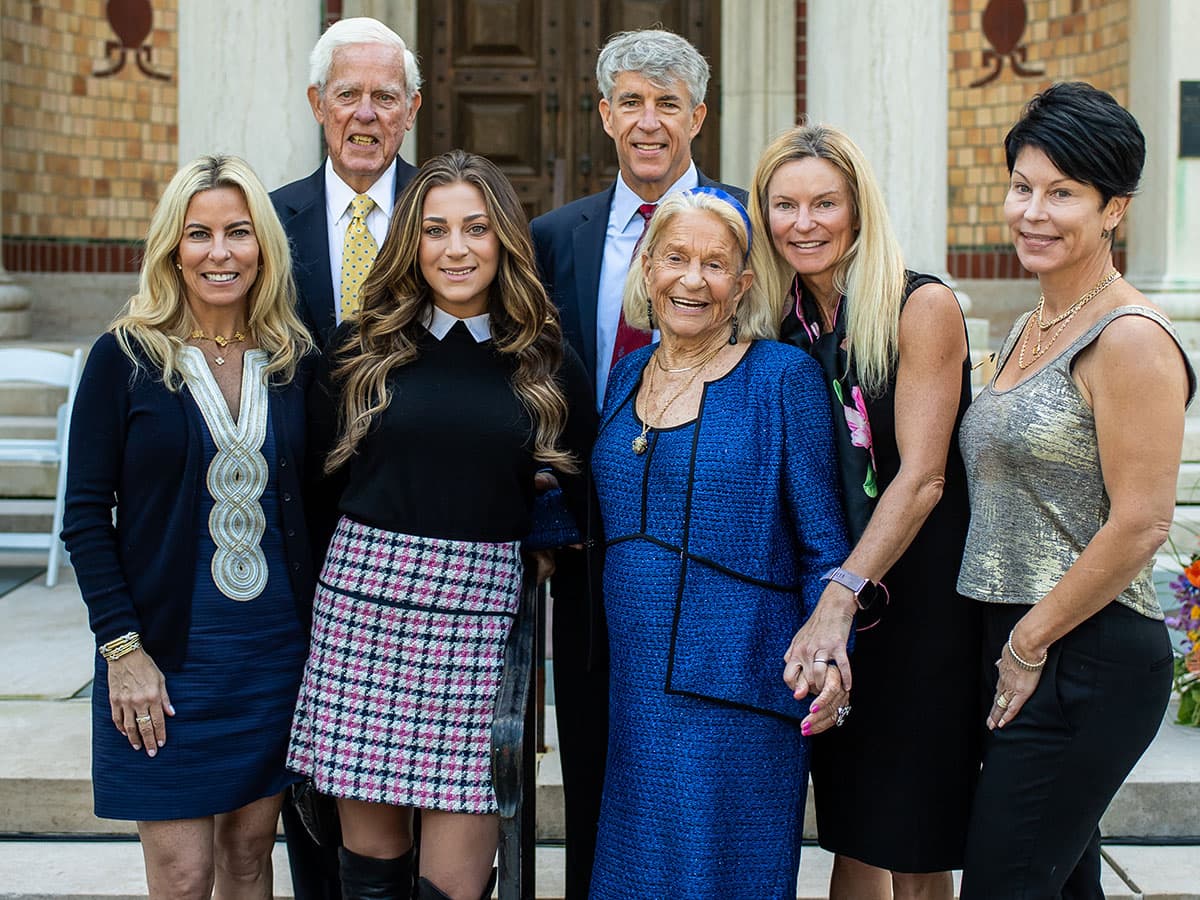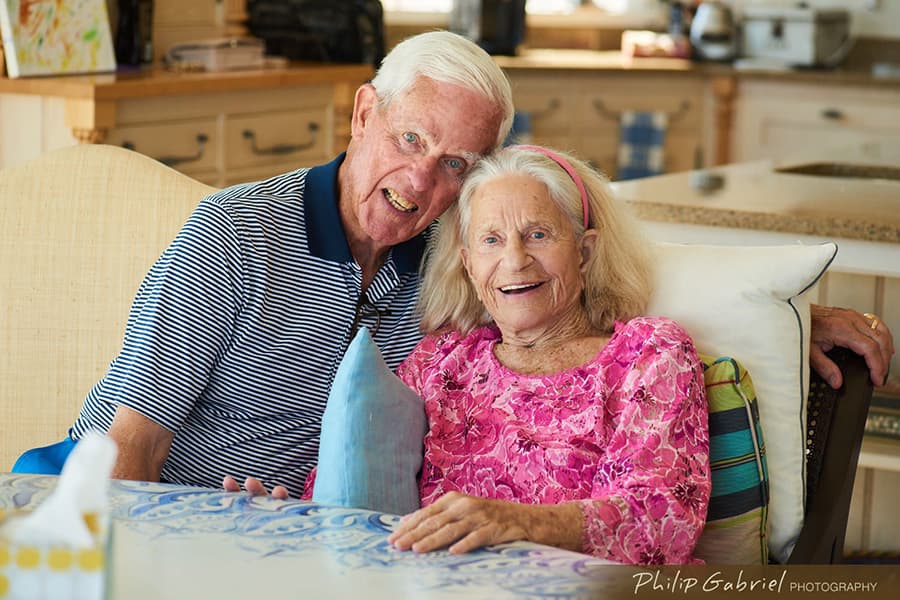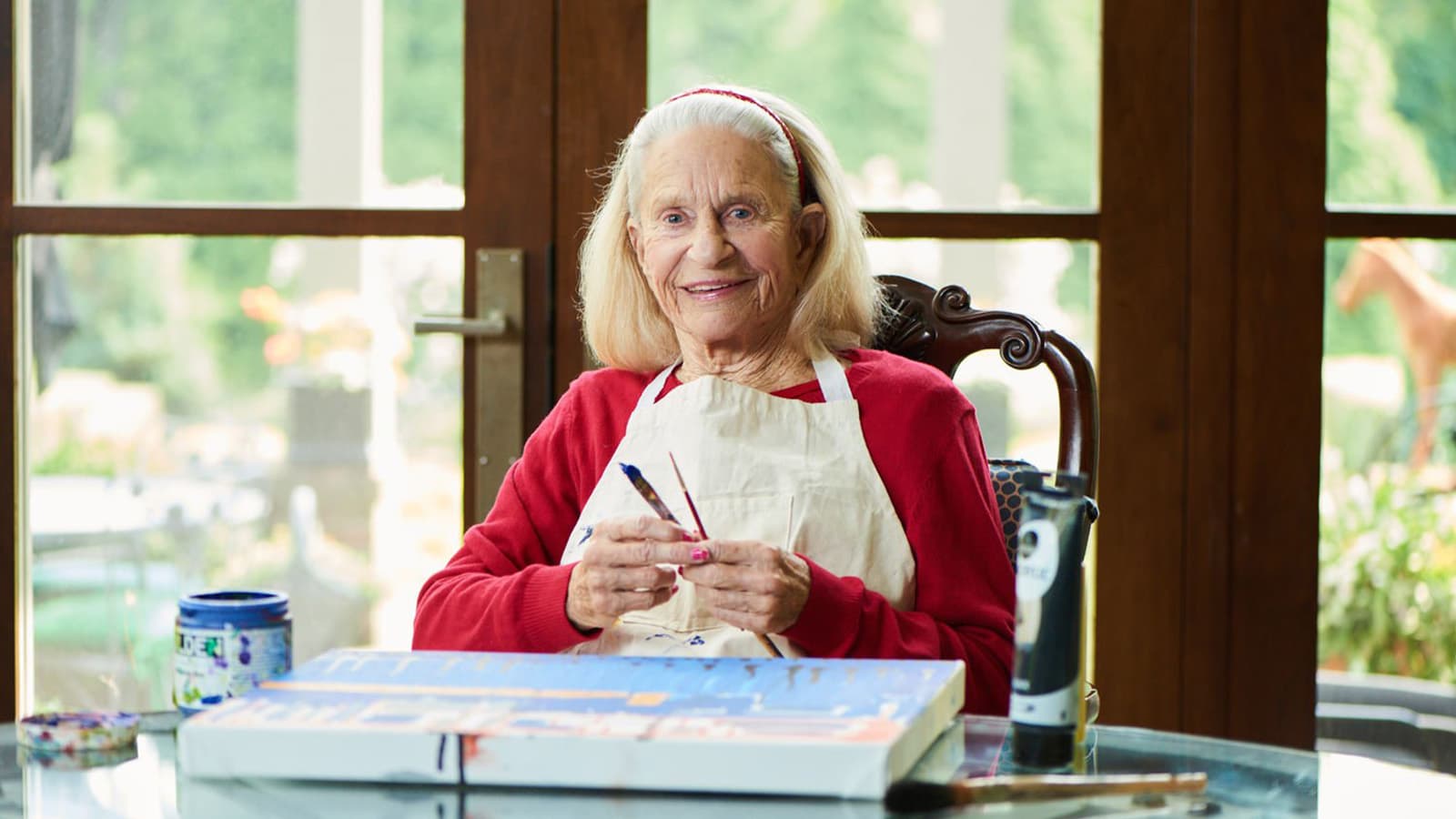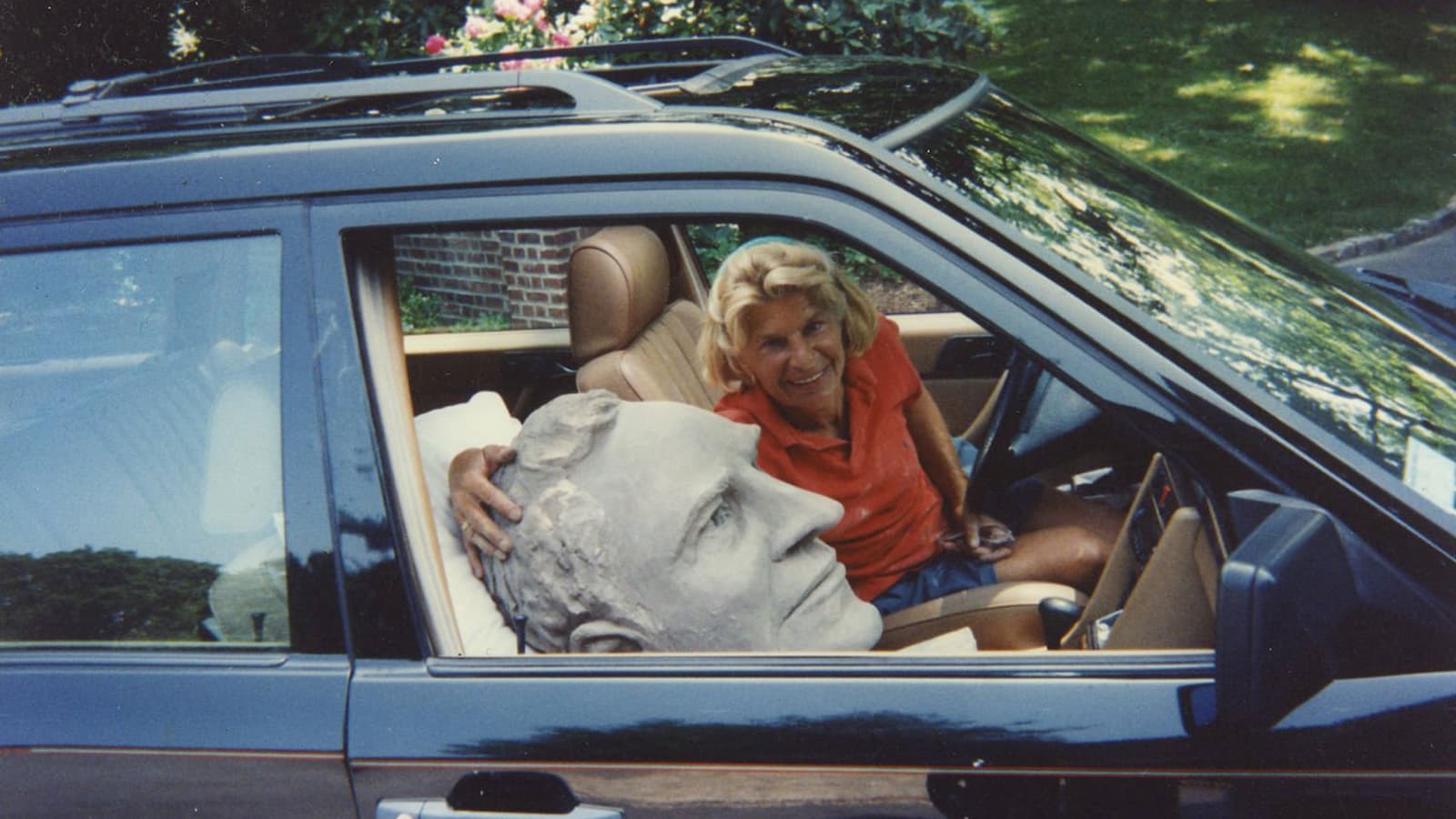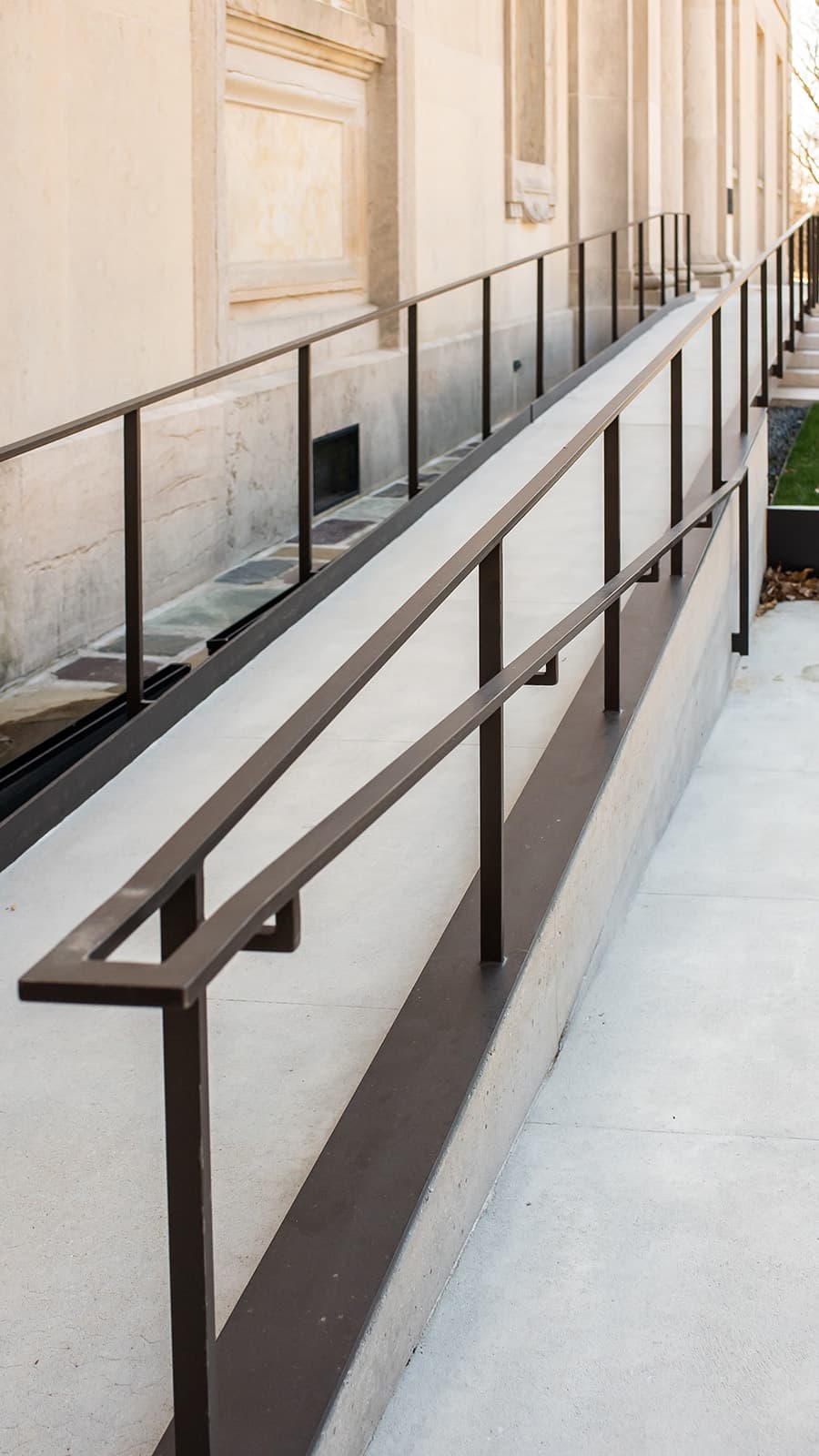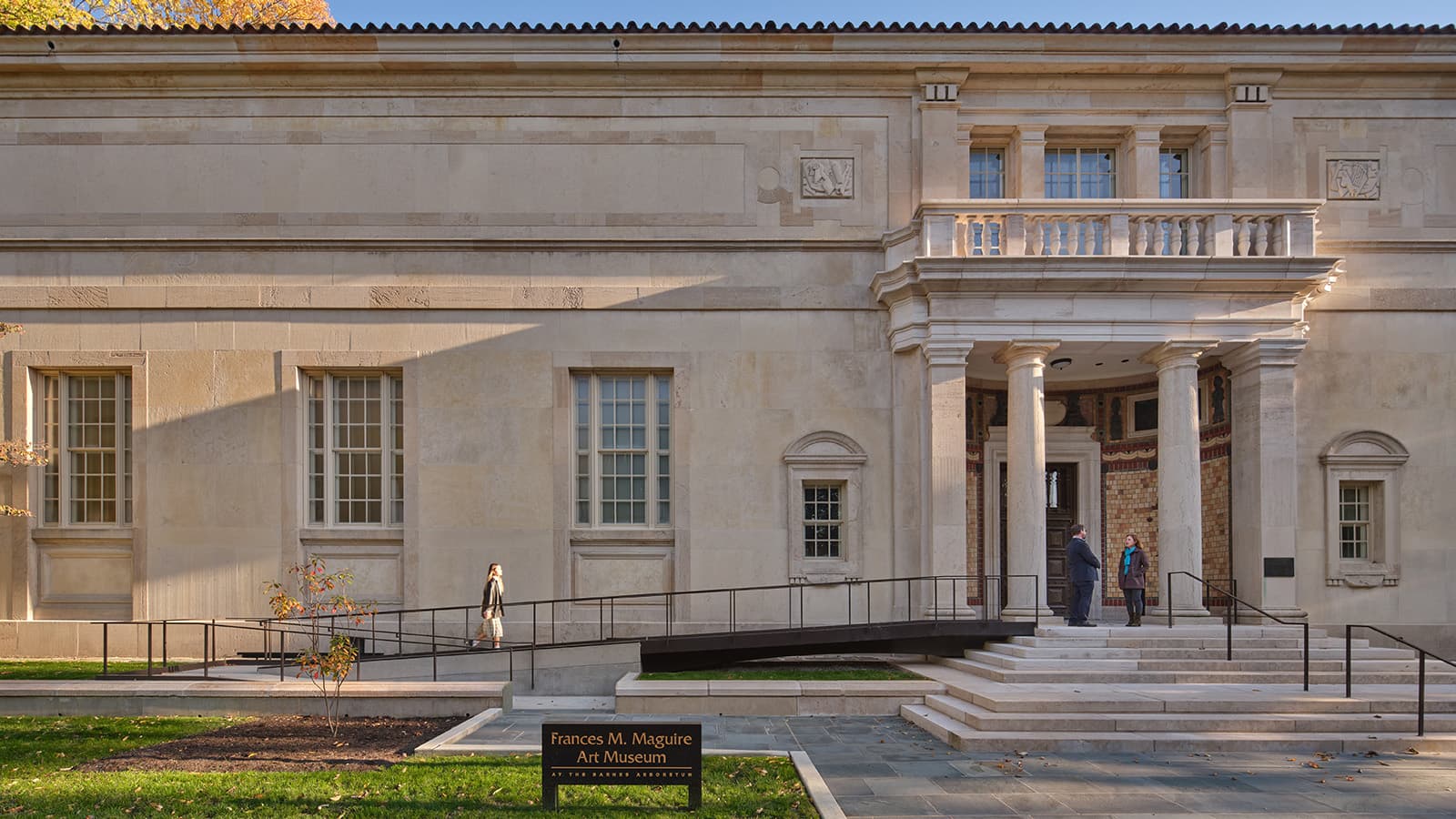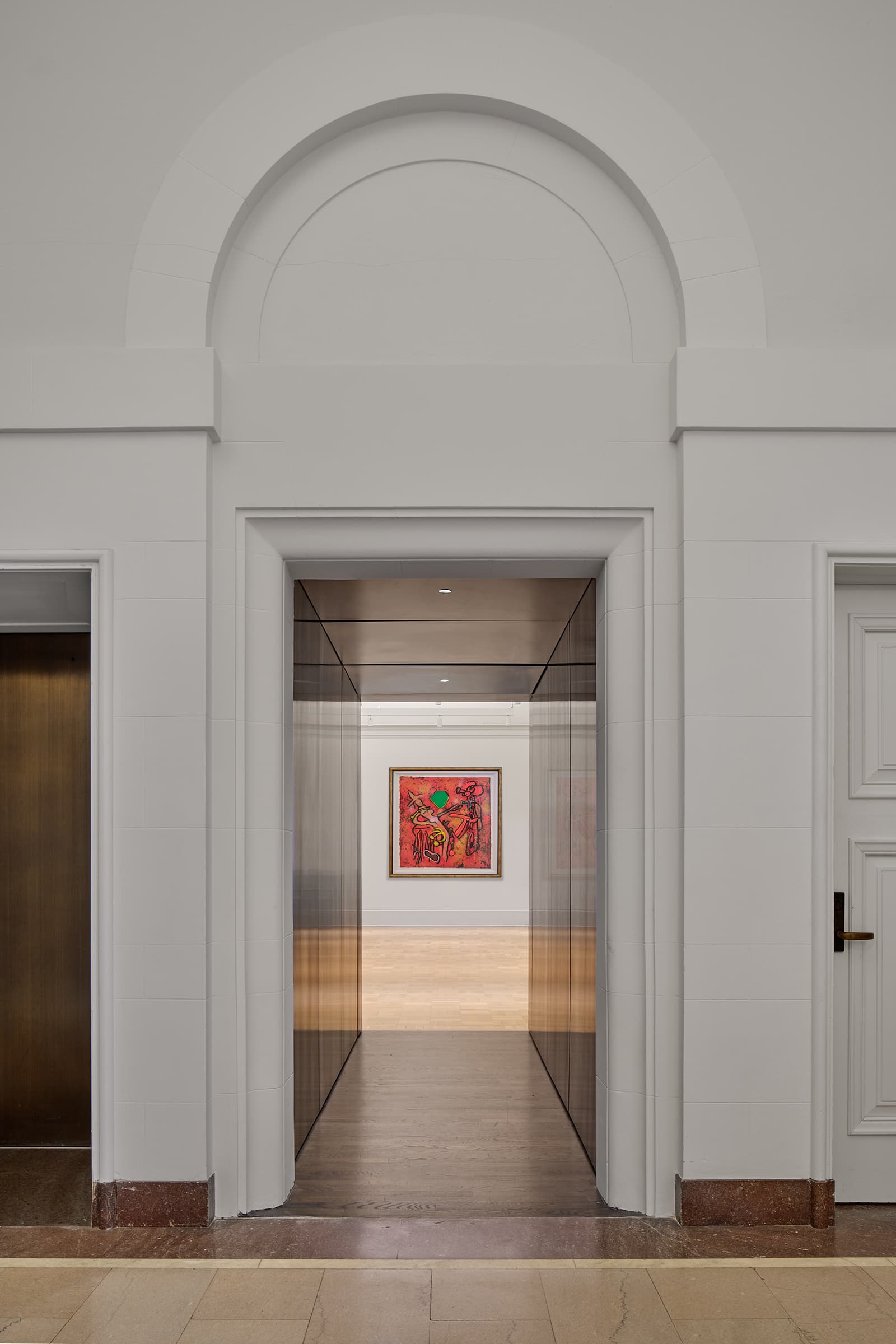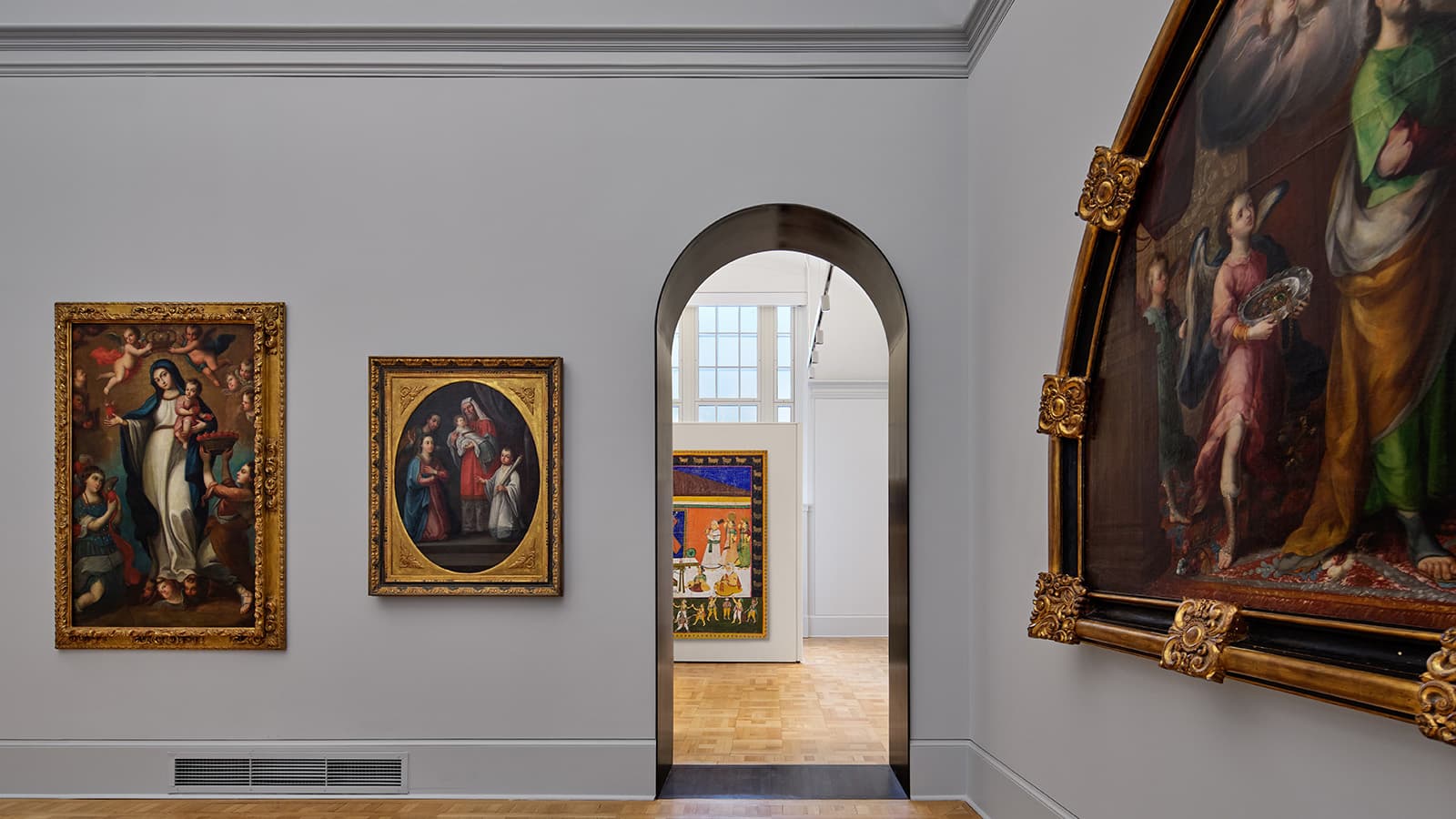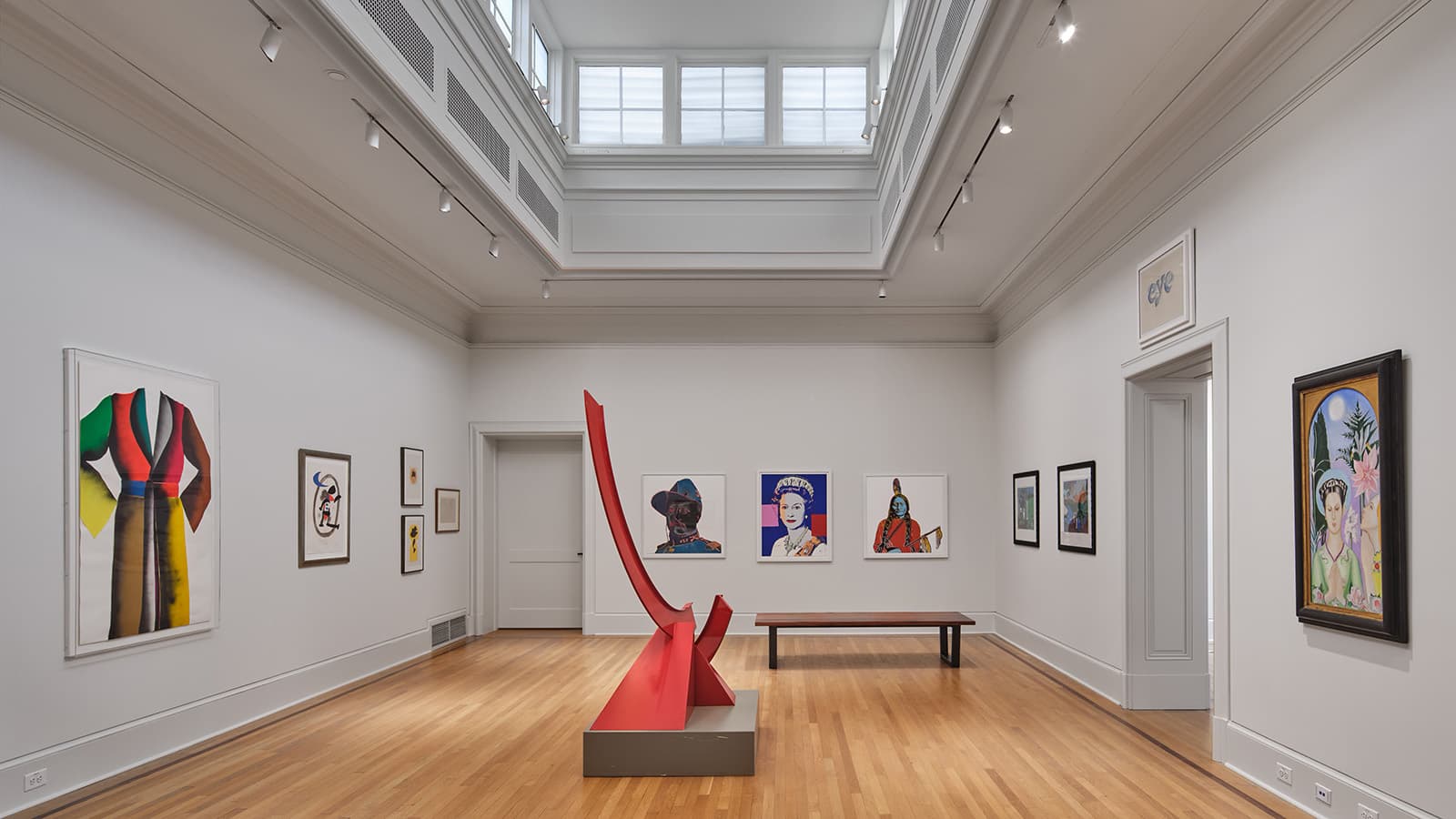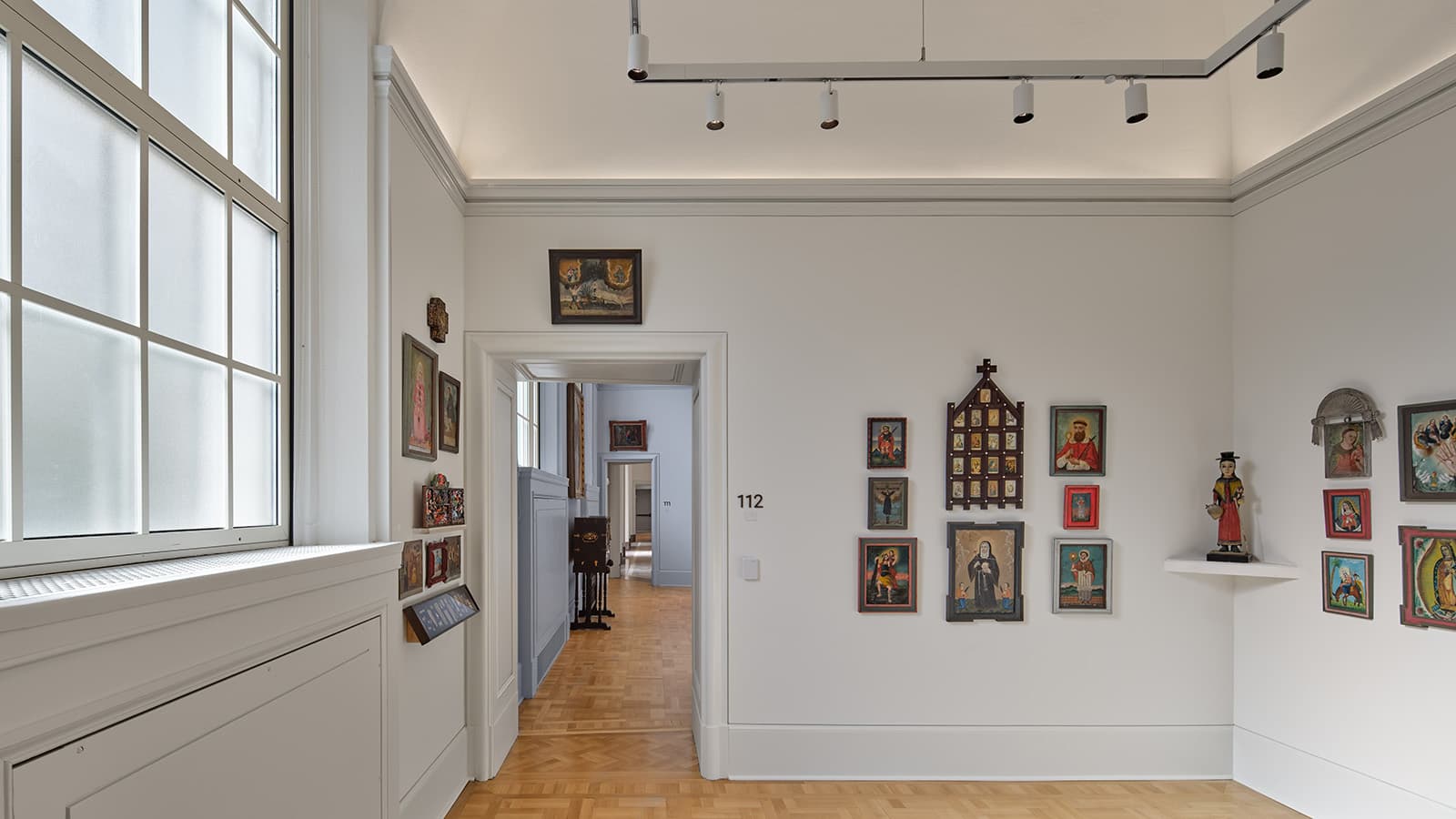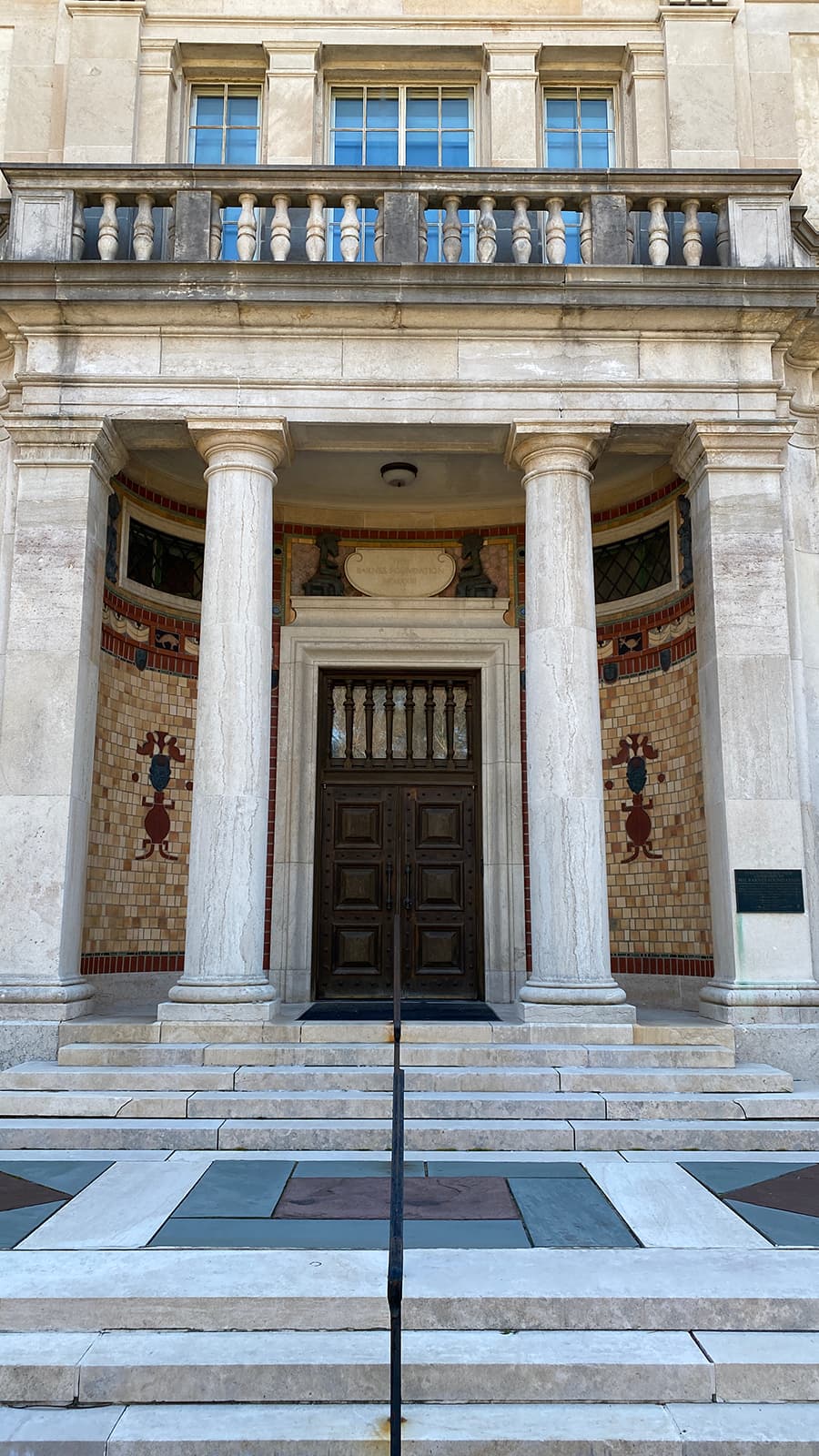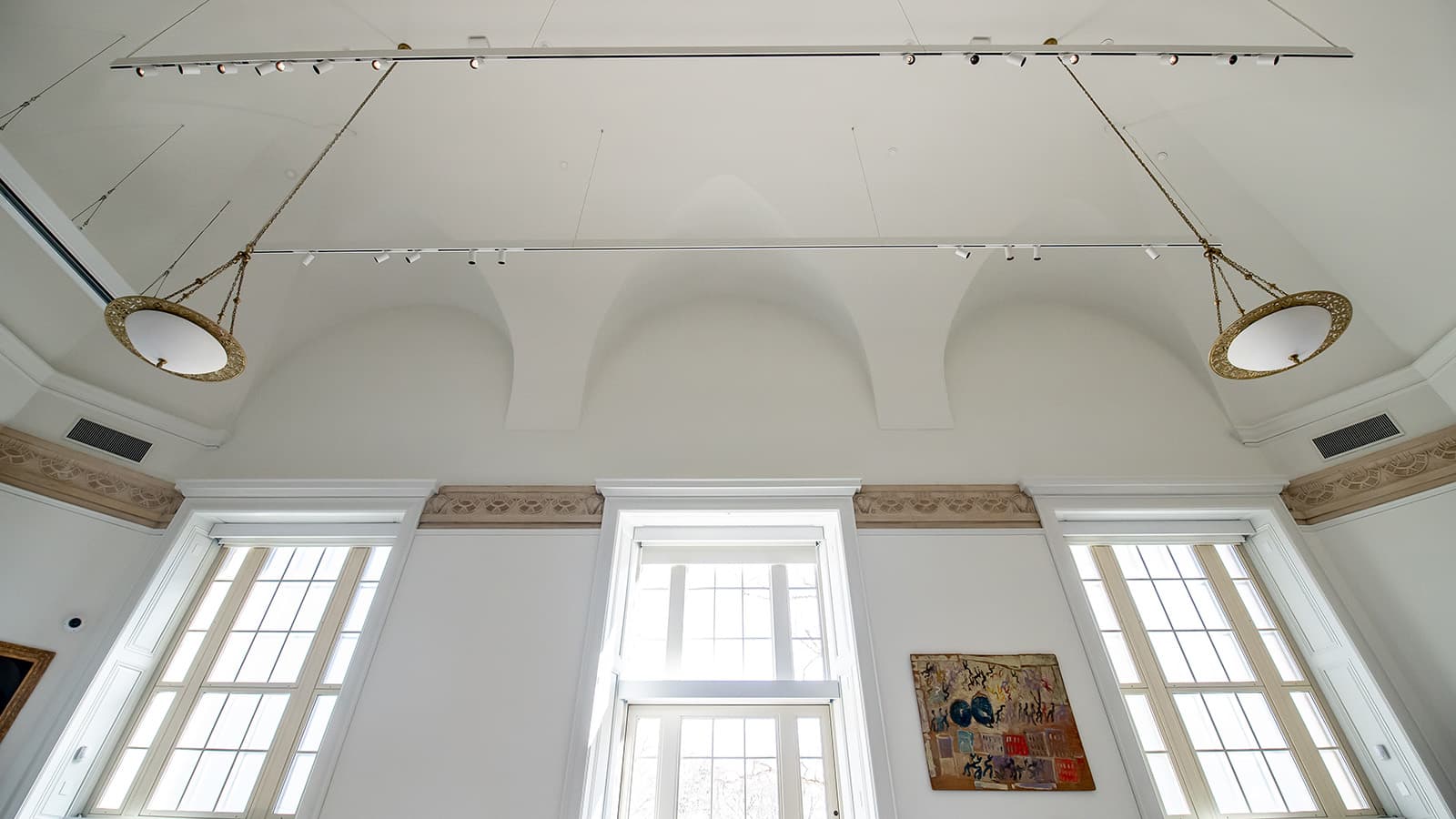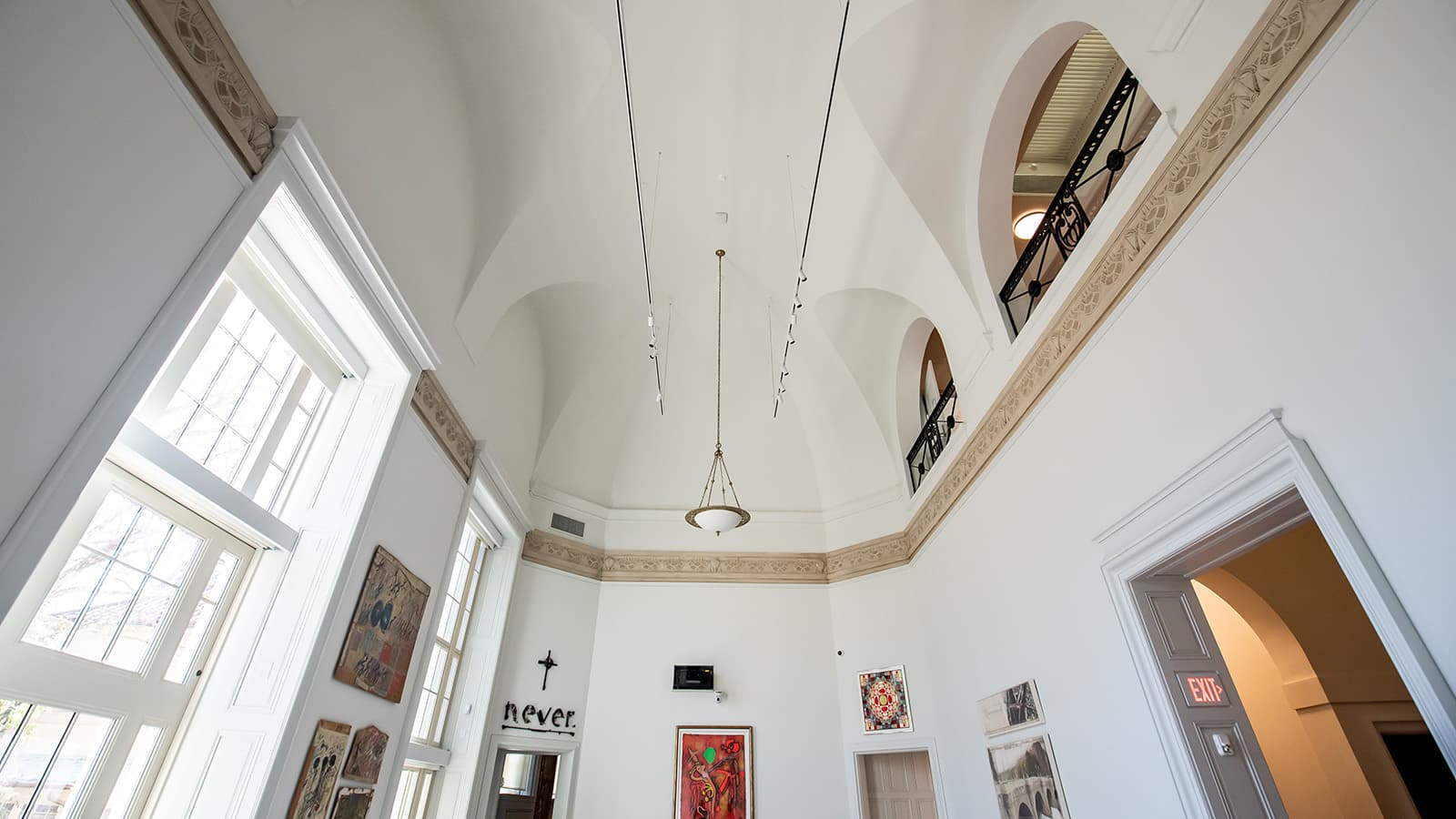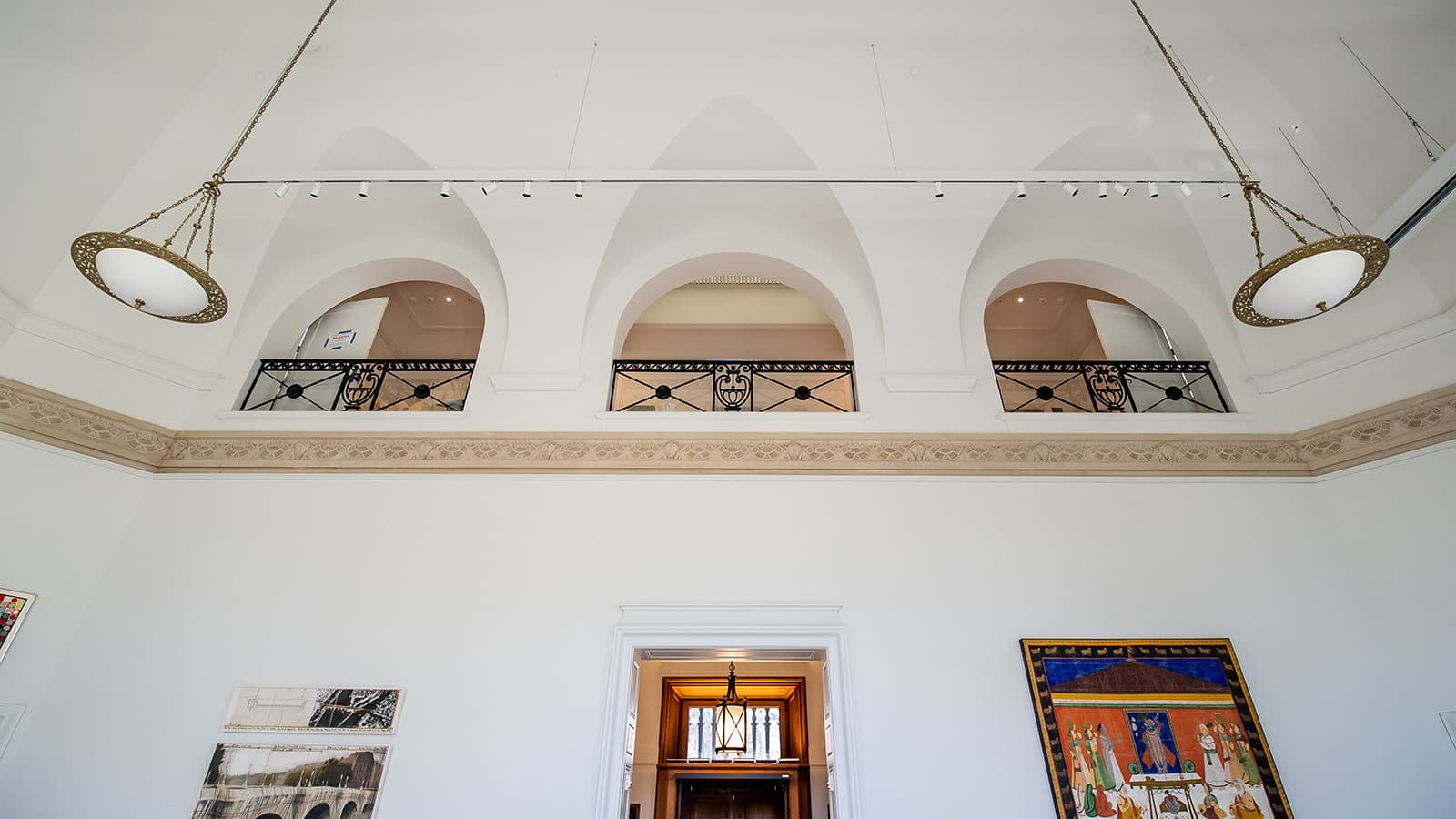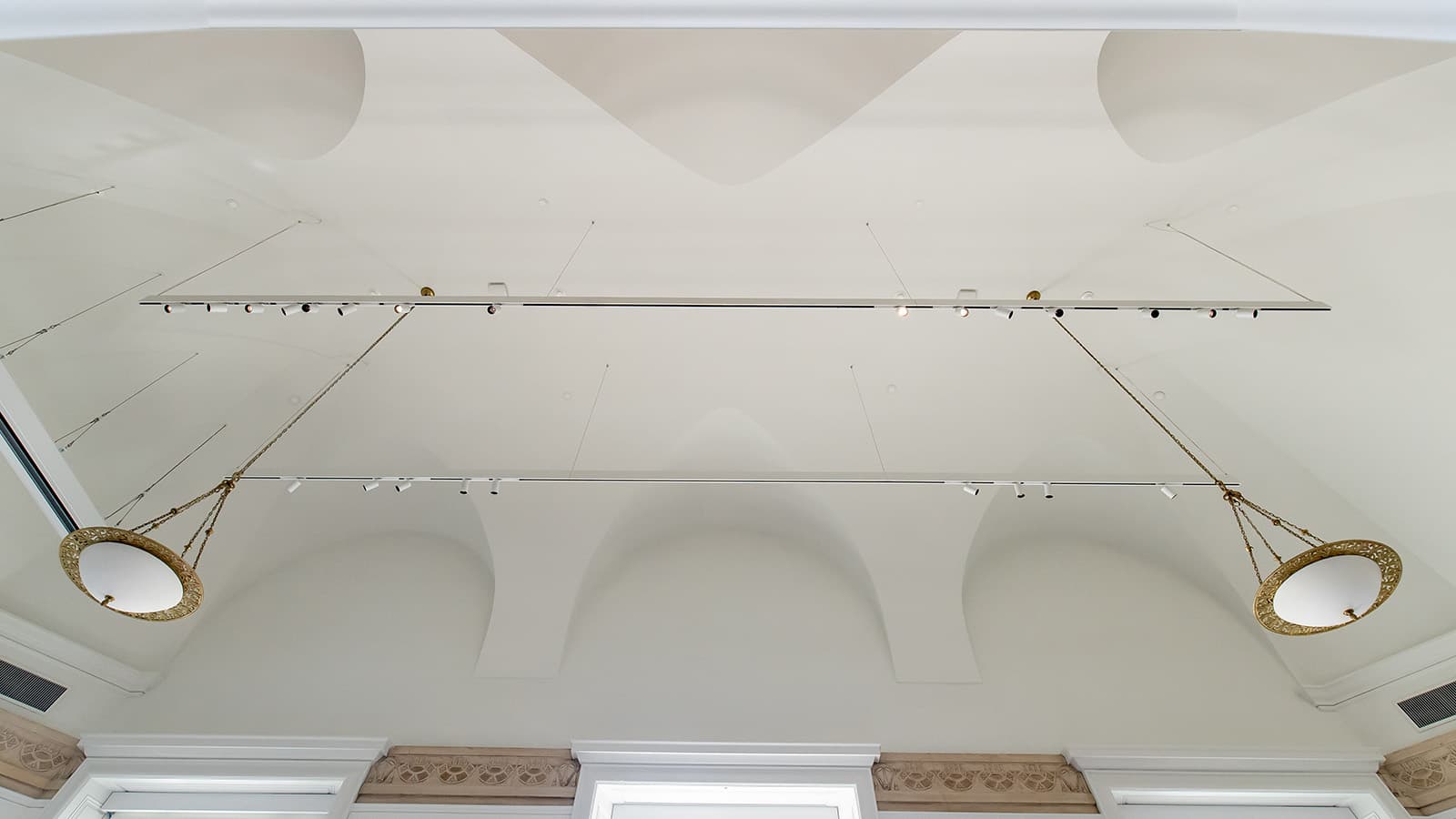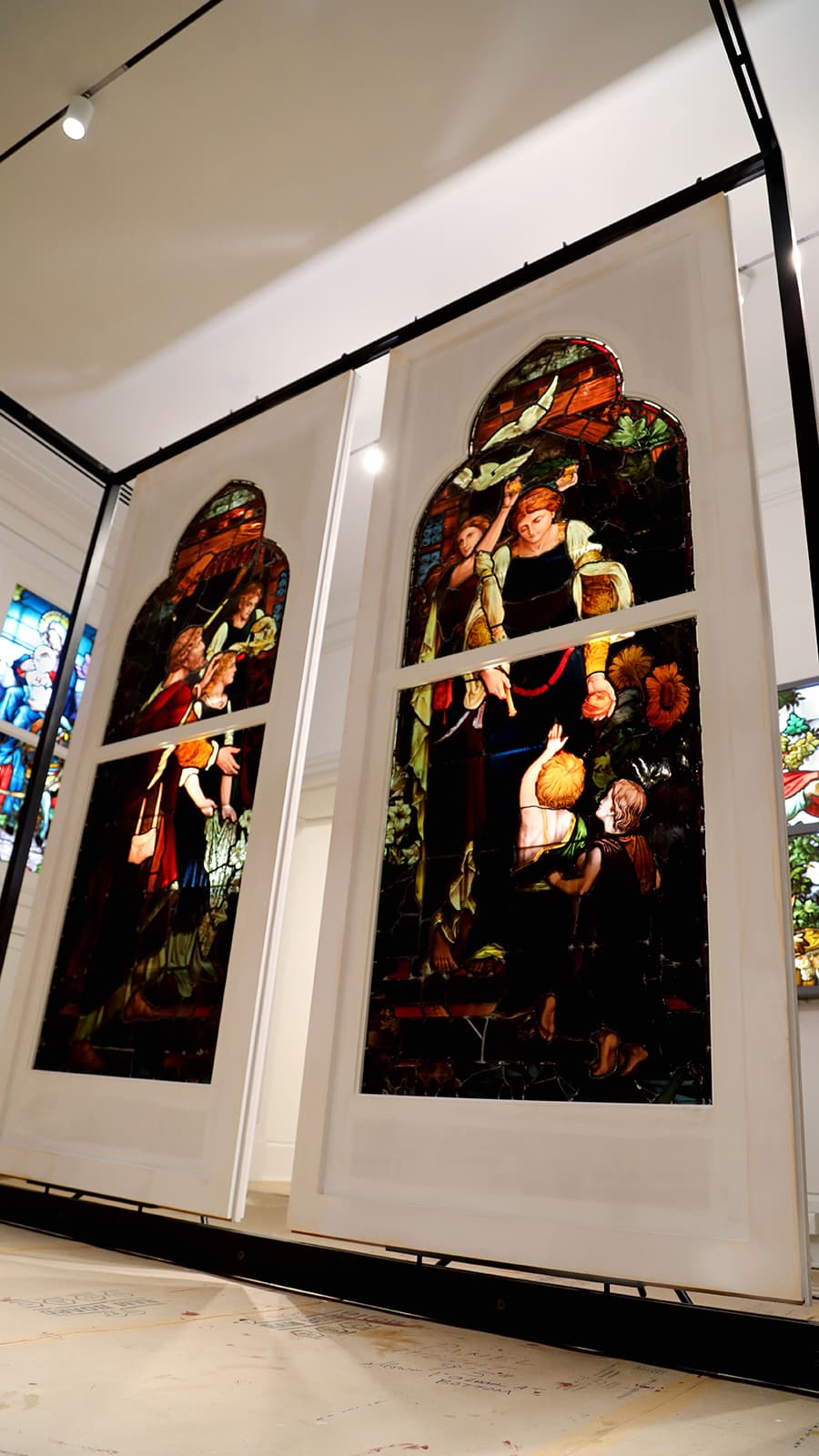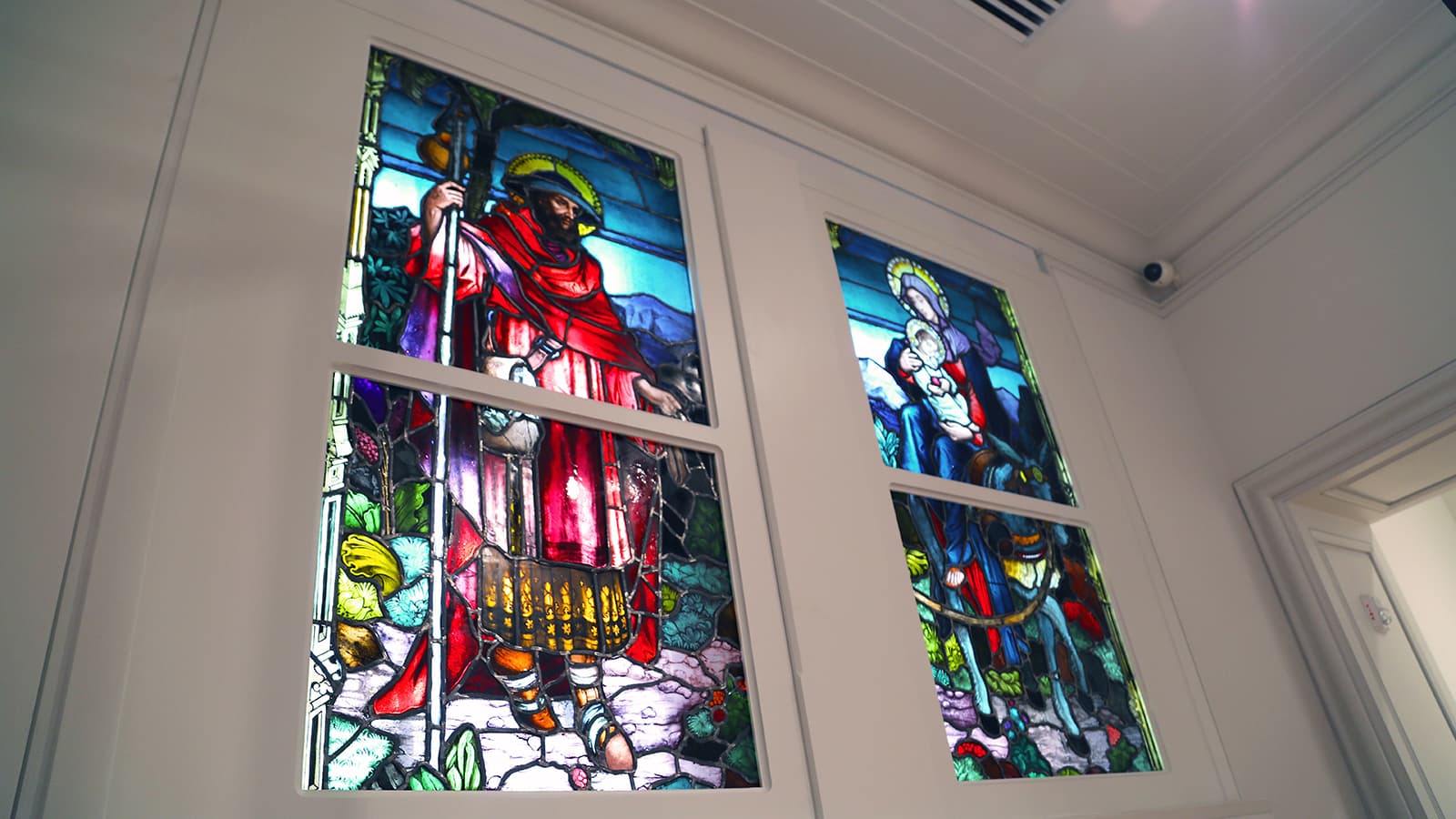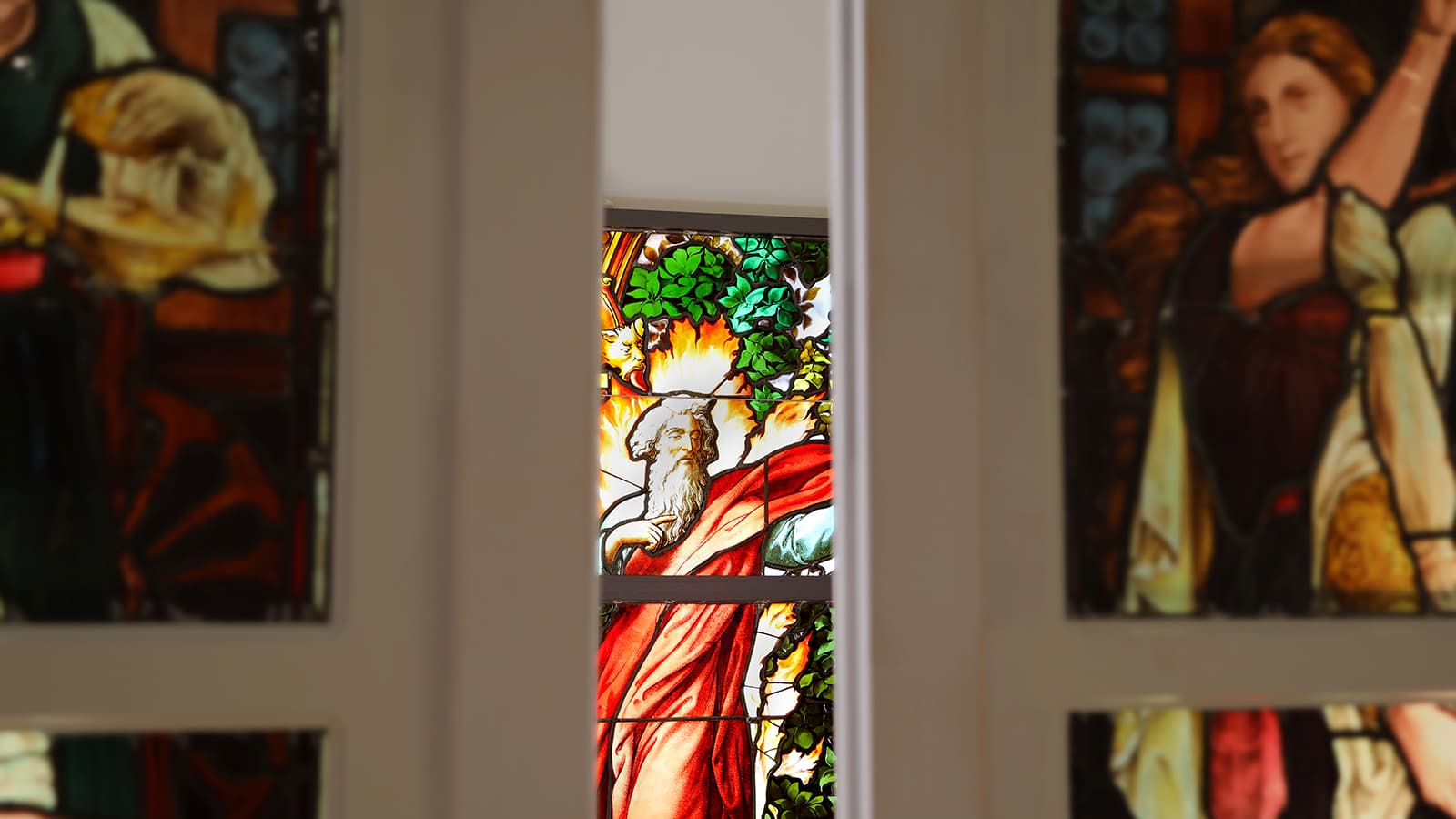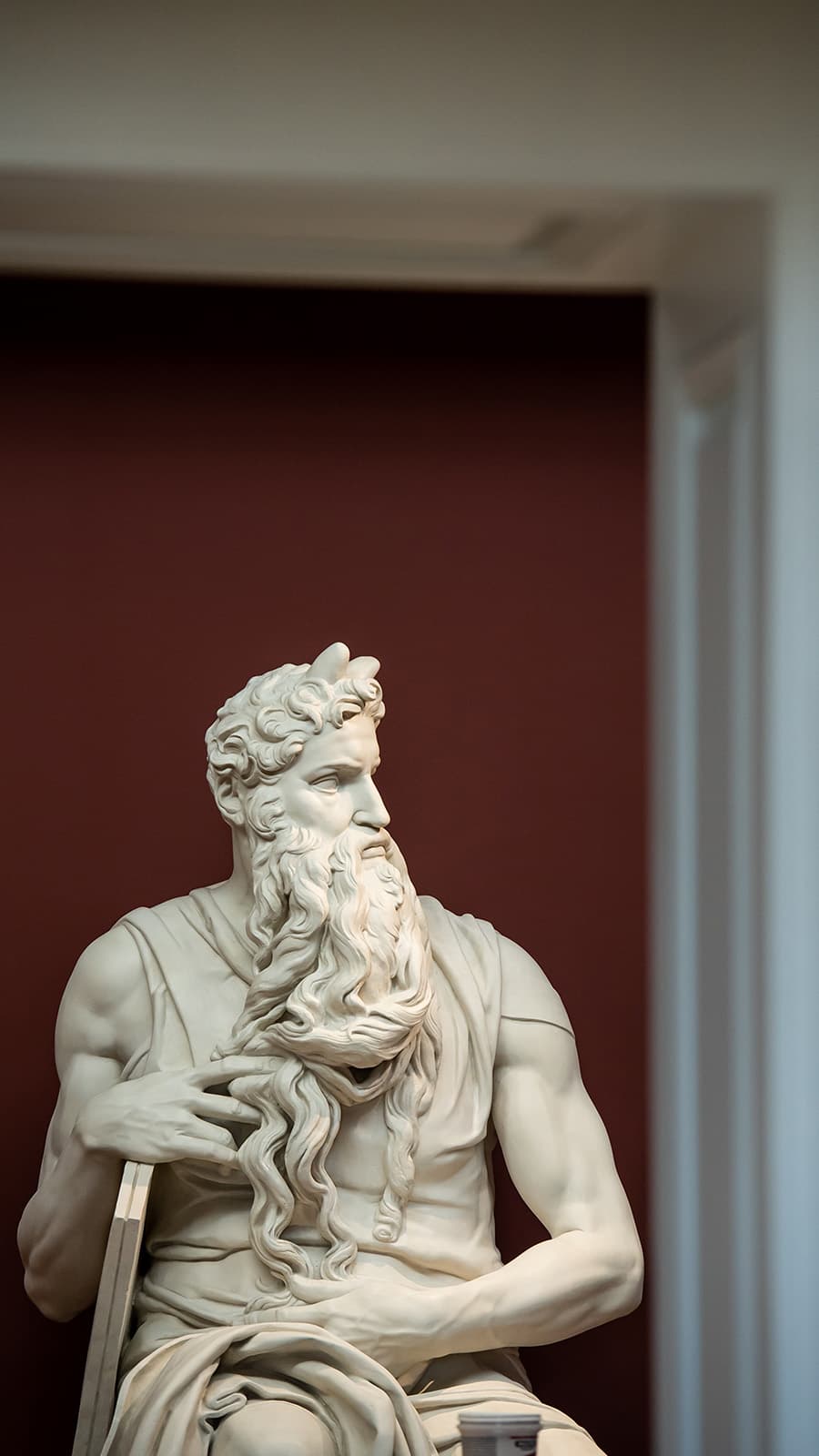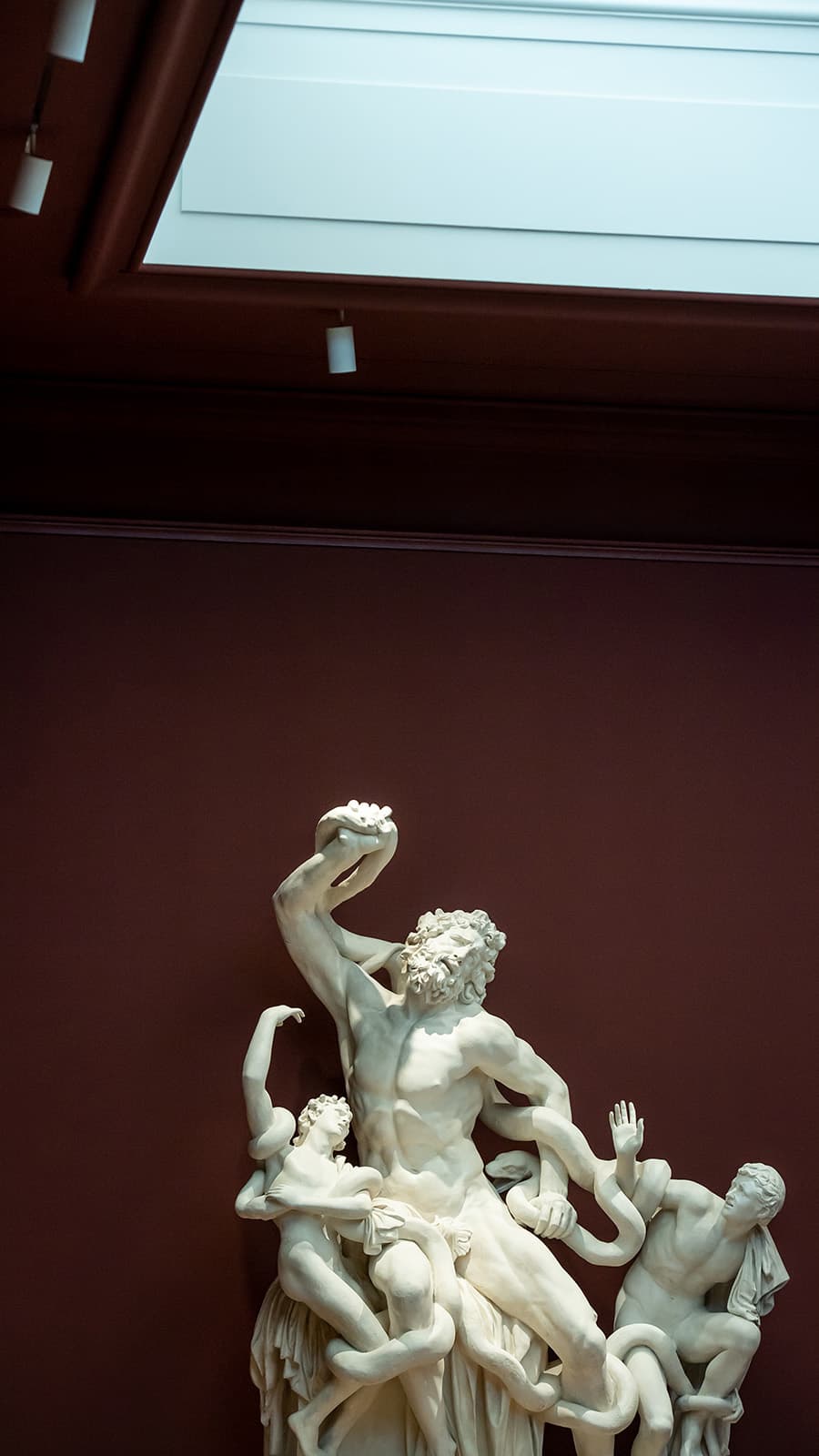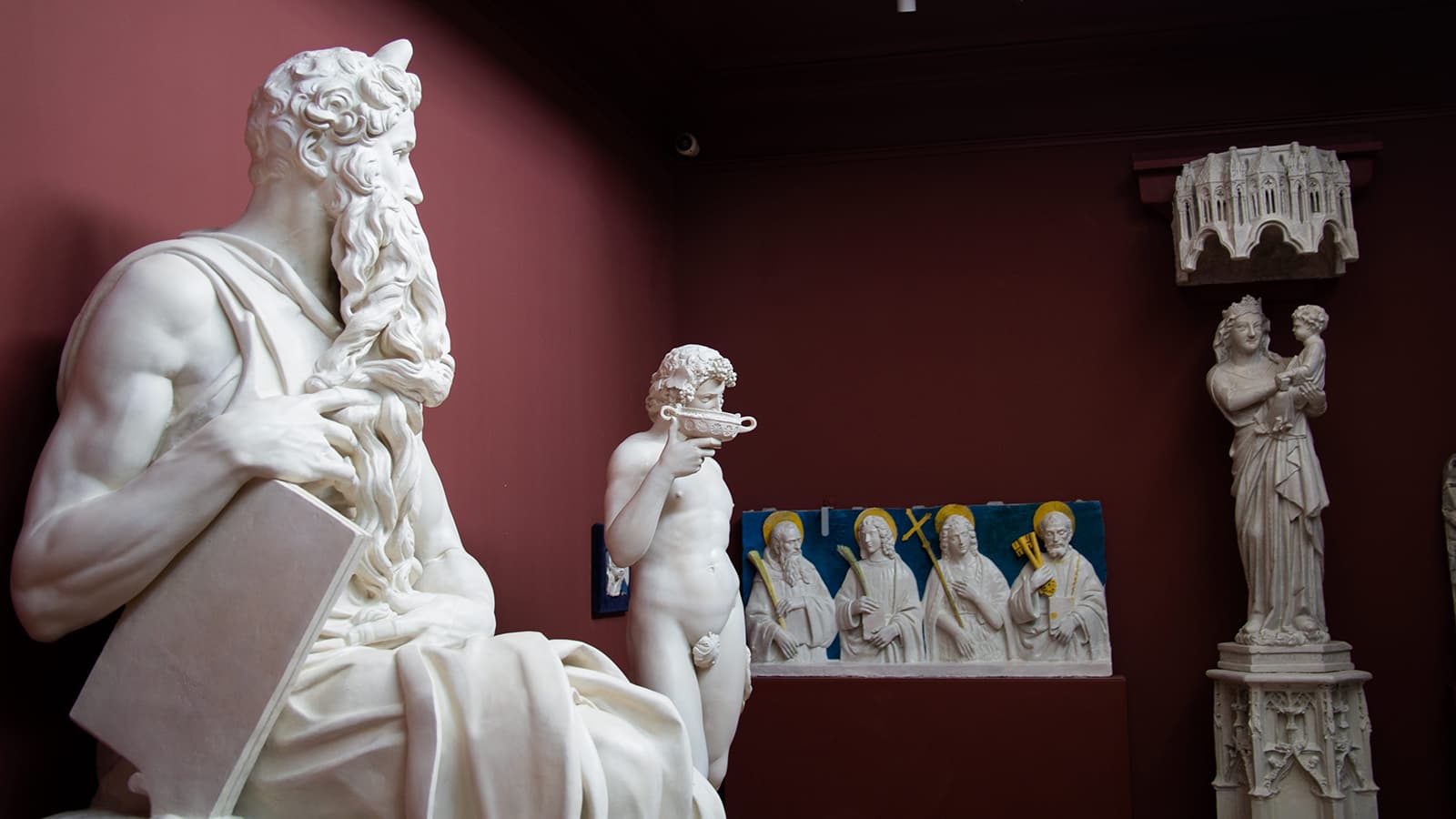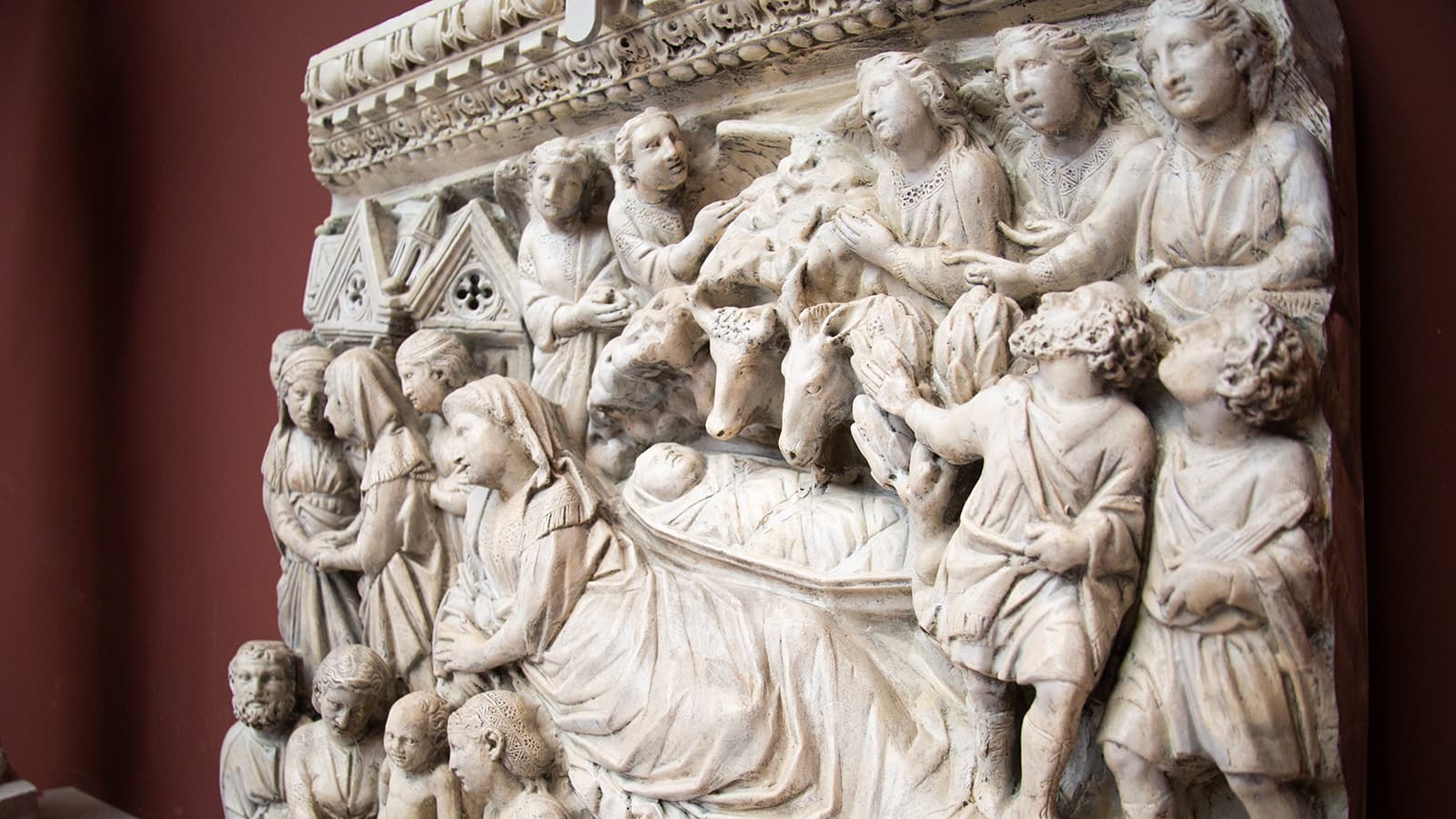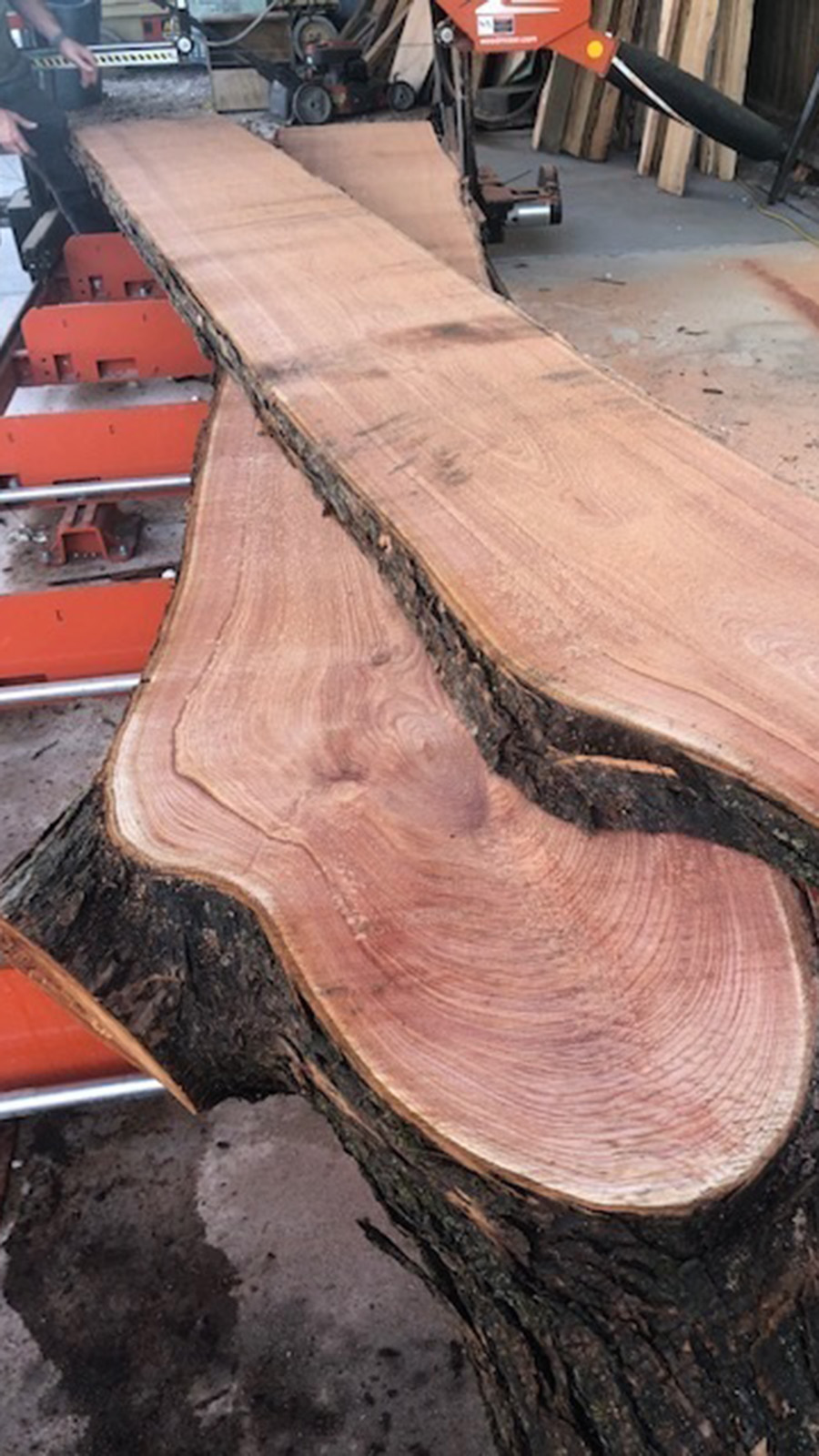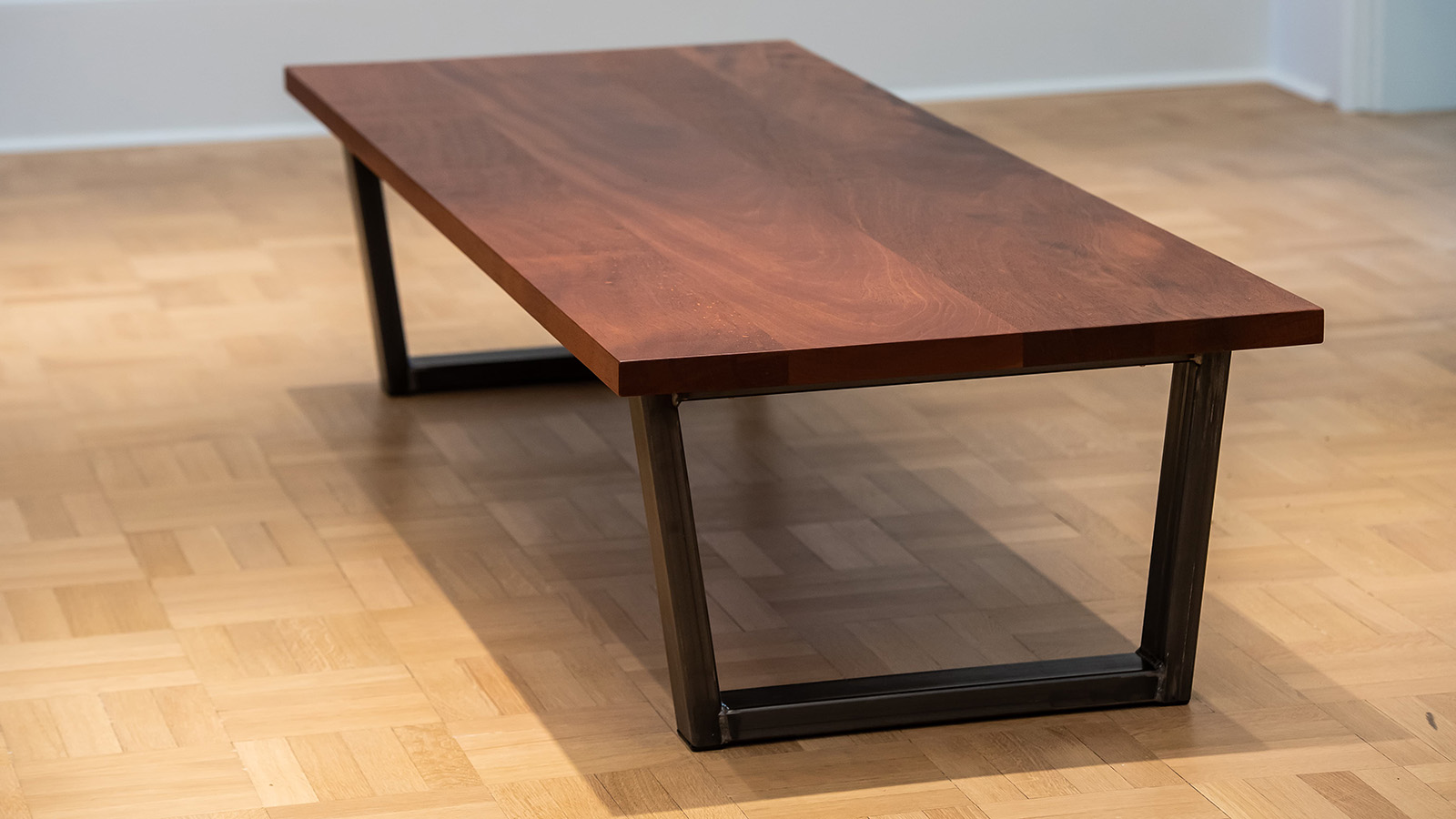Reconstructing an Icon
The Frances M. Maguire Art Museum at Saint Joseph’s University will open to the public on May 6, 2023, after intensive planning and meticulous restoration. Housed in the former Barnes Foundation building in Merion, the Maguire Museum set out with the goal of modernizing the property into a fresh, vibrant space while preserving the historic, Beaux-Arts charm that architect Paul Philippe Cret originally designed into the property for Albert C. Barnes in the 1920s.
“We are opening a new chapter, a new life, for this extraordinary building” says Emily Hage, PhD, director of the Maguire Museum and professor of art and art history at Saint Joseph’s. “The renovations make the building more accessible and encourage visitors to explore the spaces.”
Throughout planning, the Saint Joseph’s team had three guiding principles: to create a space that was respectful of the significance of such a historic landmark, to completely integrate the property into the University’s Hawk Hill campus, and to create a space where art would be accessible to everyone in the community.
From Saint Joseph’s campuses to their surrounding schools and neighbors — this museum is going to be for everyone.
Frannie’s Legacy
In 2018, on the heels of James J. ’58, H ’14, and Frances M. Maguire’s H ’14 history-making $50 million gift to SJU, the famed gallery at the former Barnes Foundation site was named the Frances M. Maguire Art Museum to honor Frannie (as she was known by friends and family) as an accomplished artist and arts advocate.
According to Jim Maguire, “Frannie always wanted art to be accessible to all.” Jim would be the first to show off Frannie’s portfolio — either on his mobile phone or hanging on the walls and shelves of the Maguire Foundation’s office space.
Frannie began her training studying painting and sculpture at the Cheltenham Art Center. She also studied at the prestigious Vermont Studio Center and the Pennsylvania Academy of the Fine Arts (PAFA). Saint Joseph’s is the beneficiary of Frannie’s artistic talents: the Chapel of St. Joseph – Michael J. Smith, S.J., Memorial is home to a bust of Fr. Smith, sculpted and donated to the University by Frannie, along with a bronze bust of 27th President C. Kevin Gillespie, S.J., which lives in the Maguire Wolfington Welcome Center.
A Museum For Everyone
When Saint Joseph’s took on the renovations to the historic Barnes property, one of the first items on the list was bolstering its accessibility.
Jamie Unkefer of DIGSAU, the architecture firm that designed the renovation, recalls the museum property being marginally accessible at the start of the renovation, with a handicapped lift that came in through the service entrance.
“We wanted to provide handicapped access at the main entrance to ensure everyone was being welcomed equally,” explains Unkefer.
To begin, DIGSAU designed an ADA accessible ramp that seamlessly blended with the façade of the historic site.
“The language of that ramp kind of became the language of the whole project,” explains Unkefer. “Which, of course, begins with ADA compliance but goes so much further.”
Stepping into the Maguire Art Museum, visitors may be surprised to see a departure from the prescriptive design of the original Barnes site, a space that had previously been curated by Albert C. Barnes to lead patrons through groups of purposefully placed art.
The Maguire Museum deviated from the original singular entrance to the galleries. This was done to allow more space for larger works, but also as a way to make the galleries more accessible.
“Albert Barnes had a very specific way for guiding people through his collection,” says Unkefer. “We all agreed that this museum would need open space, to leave room for all different kinds of people with varying levels of need to make their way through exhibitions and collections in any way they can.”
Now, there is more connectivity between the main lobby and the gallery spaces with additional entryways finished in dark flooring to show contrast. These additions were also clad in brushed bronze — a subtle hint at where changes were made for access throughout the museum.
Meticulous attention was paid to maintaining the building’s historical significance throughout the process of creating these inclusive spaces within its galleries.
“Walls were taken down to make more room,” says Unkefer, “which became very complicated because the building has these intricate plaster arches in its ceiling.”
Experts in historic plastering were called in once engineers were able to reconcile the complicated geometry of groin and barrel vaults joining together in an artful marriage.
“It was puzzling, to say the least,” recalls Unkefer. “We loved it.”
Everything Is Illuminated
Enhancing the lighting within the building was another massive undertaking to ensure accessibility to those with low vision while bringing much needed brightness to the interior.
Arup, an international lighting design firm, was brought in to assess the museum space and develop a modern solution to illuminating what started out as a nearly empty interior.
“When we first got to the project, everything that made the building The Barnes had been stripped away. It was dark and empty with old dusty burlap on the walls and very little light shining through these narrow Victorian nooks and crannies,” recalls Unkefer, who worked closely with the designers at Arup. “Barnes relied heavily on natural light to showcase his collection and over time we’ve learned that is not the best way to maintain the integrity of priceless works of art.”
DIGSAU and Arup both wanted to be certain the lighting solution was contemporary, discernible from any of Cret’s original design. The lighting now goes beyond focusing on showcasing art and, instead, brings the whole of the building’s interior into the spotlight.
It’s also environmentally sensitive — the artificial lights are calibrated so that if it’s bright enough with outside light, they dim.
“The original Barnes lighting wasn’t about space, it was about planes,” explains Unkefer. “When we look at the lighting system now, we’re looking at something that totally stands on its own and gives visitors an experience of the entire space. Truly, the Maguire Art Museum has brought this property into its most liberated form."
Keeping It Authentic
From the start of the project, it was understood that there would need to be extensive renovations to the exterior of the museum, which would require a delicate hand.
The outside of the property was flush with stone and paned windows in need of restoration. Replicating historical features like these isn’t always simple — it takes finding niche tradespeople and materials that may no longer exist.
Most notably for DIGSAU and Saint Joseph’s administrative services team, the balconette at the entrance to the museum needed to be completely rebuilt.
“Restoring the balconette was a completely fascinating and totally excruciating process,” recalls Unkefer. “It was made out of this very particular limestone that is no longer being quarried.”
The project team worked to unearth the source of the original limestone used by Paul Cret, which came from a quarry in France. The quarry has since ceased production of this specific type of stone, but had 14 limestone blocks left, which were swiftly claimed for the Maguire Art Museum.
“The pieces we needed were replicated and painstakingly replaced,” says Unkefer. “It was incredible how long just that aspect of the project took — making sure each piece of stone was perfectly carved out — but it was a big part of making the exterior of the Maguire Art Museum come to life.”
Breathing New Life into the Lunettes
While the Maguire Art Museum is ready for visitors, some areas are still awaiting final touches — the main gallery’s signature lunettes, which the Maguire Museum logo design was based on, are the most notable blank spaces that are rife with potential.
In 1932, Albert C. Barnes commissioned Henri Matisse (for $30,000!) to complete one of the Foundation’s signature works — a mural called “La Danse,” which was installed into the lunettes of the main gallery space. The commission was a great challenge for Matisse, who had never created a work in an architectural setting. He ended up creating three versions of the piece, two of which now hang in the Musée d’Art Moderne de Paris, as they didn’t fit the space Barnes commissioned it for.
The third version of “La Danse” was carefully relocated to The Barnes Foundation’s Benjamin Franklin Parkway museum in center city, Philadelphia.
“The lunettes are such a significant space in the museum,” says Hage. “We want to be able to highlight them in the way visitors will be expecting.”
To this end, Hage and her team are holding a competition for artists to submit proposals for the lunettes.
“It’s going to be such an amazing opportunity for artists in our community and beyond,” says Hage. “Imagine your own work hanging where Matisse’s was for so many years. It’s going to be an enormous honor for those who are selected.”
Unique Spaces for a Unique Collection
Saint Joseph’s permanent collection includes over 2,500 works of art, and Hage set out to fit as many as possible in the Maguire Art Museum.
The stained glass collection has more than 100 windows sourced from both the United States and Europe, and it includes both secular and religious scenes. While many of the windows come from decommissioned churches in the Philadelphia area, several come from the most important stained glass studios of the 19th and 20th centuries (e.g., George Morgan Bros. of New York; Franz Mayer Co. of Munich, Germany; and Louis Koch of Beauvais, France.)
“We considered several approaches to this gallery and decided on a novel one that exhibits the stained glass panels in a variety of ways — in some cases, even showing the backs of them,” explains Carmen Croce ’71, curator of the Maguire Art Museum and director of the University’s Scholarly Press. “This allows viewers to see the windows lit from different angles, and in some cases, to even see the backs of them to better observe methods of construction and styles of painting that are not normally seen.”
This collection comprises full-size plaster and bronze casts gifted or on loan from the Metropolitan Museum of Art. Among the casts are several examples by Renaissance artist Michelangelo; sculptures from the Parthenon in Athens, Greece; the famous "Laocoön" at the Vatican; and medieval sculptural reliefs from France, Germany and Italy.
To add stunning contrast to the starkness of the casts, Hage and her team at the Maguire Museum chose to paint the walls a deep, rich burgundy color that emphasizes the curves and shadows of the casts.
Staying Sustainable
The Maguire Art Museum is located on the Barnes Arboretum at Saint Joseph’s. Staff at the Arboretum and members of the Saint Joseph’s team joined forces with Delaware nonprofit The Challenge Program to create a sustainable solution for furnishing the Maguire Museum.
In early 2022, climbing arborists were hired to remove a few decaying Chinese Toon trees. Once the trees were felled, The Challenge Program took the mahogany-like wood to a shop in Delaware, where vocational trainees made it into beautiful furniture for the Maguire Museum’s interior.
A sleek conference table was custom made from the trees to furnish the bright interiors of the Maguire Museum. Additional benches, tables and a greeter stand were built by the Challenge Project using other sustainable materials.
“This was a wonderful story of rebirth,” remarks Kevin Mueller, MBA, director of construction and planning at Saint Joseph’s. “We were able to take something that was dying and repurpose it into beautiful furniture, which then has given a second life to this amazing, historic property.”
With the grand opening of the Maguire Museum just around the corner, Hage and the rest of the museum team are deep into coordinating programming with SJU students, faculty and staff, as well as K-12 students and other community partners. The curatorial staff are booking artists for their rotating exhibition spaces well into 2025.
“We have a whole host of programs in the works for a wide range of audiences,” says Hage. “Lectures, special tours and even games — all aimed to make the museum an accessible and fun destination.”
Hage and the museum team look forward to welcoming visitors into the refreshed space beginning May 6, 2023.
To become a member of the Frances M. Maguire Art Museum, visit sju.edu/maguire-art-museum.

